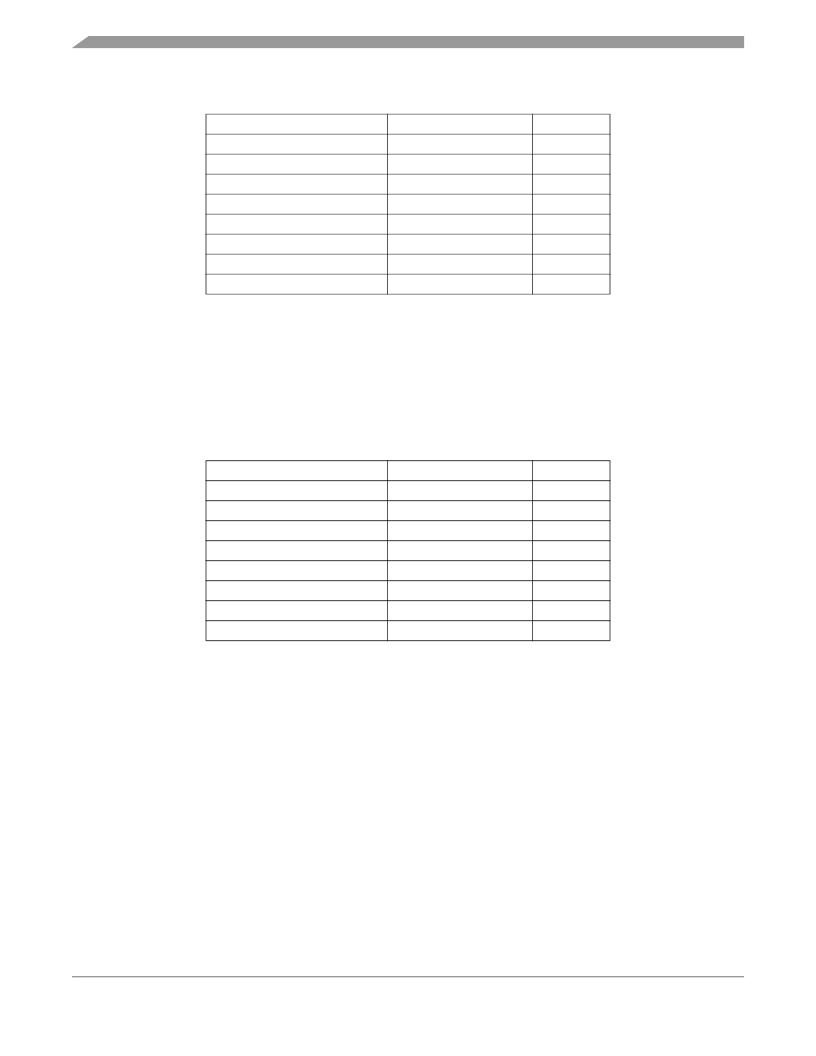- 您現(xiàn)在的位置:買賣IC網(wǎng) > PDF目錄359141 > MC68HC08GT16 (飛思卡爾半導體(中國)有限公司) 8-bit microcontroller(8位MCU) PDF資料下載
參數(shù)資料
| 型號: | MC68HC08GT16 |
| 廠商: | 飛思卡爾半導體(中國)有限公司 |
| 英文描述: | 8-bit microcontroller(8位MCU) |
| 中文描述: | 8位微控制器(8位微控制器) |
| 文件頁數(shù): | 158/292頁 |
| 文件大小: | 3759K |
| 代理商: | MC68HC08GT16 |
第1頁第2頁第3頁第4頁第5頁第6頁第7頁第8頁第9頁第10頁第11頁第12頁第13頁第14頁第15頁第16頁第17頁第18頁第19頁第20頁第21頁第22頁第23頁第24頁第25頁第26頁第27頁第28頁第29頁第30頁第31頁第32頁第33頁第34頁第35頁第36頁第37頁第38頁第39頁第40頁第41頁第42頁第43頁第44頁第45頁第46頁第47頁第48頁第49頁第50頁第51頁第52頁第53頁第54頁第55頁第56頁第57頁第58頁第59頁第60頁第61頁第62頁第63頁第64頁第65頁第66頁第67頁第68頁第69頁第70頁第71頁第72頁第73頁第74頁第75頁第76頁第77頁第78頁第79頁第80頁第81頁第82頁第83頁第84頁第85頁第86頁第87頁第88頁第89頁第90頁第91頁第92頁第93頁第94頁第95頁第96頁第97頁第98頁第99頁第100頁第101頁第102頁第103頁第104頁第105頁第106頁第107頁第108頁第109頁第110頁第111頁第112頁第113頁第114頁第115頁第116頁第117頁第118頁第119頁第120頁第121頁第122頁第123頁第124頁第125頁第126頁第127頁第128頁第129頁第130頁第131頁第132頁第133頁第134頁第135頁第136頁第137頁第138頁第139頁第140頁第141頁第142頁第143頁第144頁第145頁第146頁第147頁第148頁第149頁第150頁第151頁第152頁第153頁第154頁第155頁第156頁第157頁當前第158頁第159頁第160頁第161頁第162頁第163頁第164頁第165頁第166頁第167頁第168頁第169頁第170頁第171頁第172頁第173頁第174頁第175頁第176頁第177頁第178頁第179頁第180頁第181頁第182頁第183頁第184頁第185頁第186頁第187頁第188頁第189頁第190頁第191頁第192頁第193頁第194頁第195頁第196頁第197頁第198頁第199頁第200頁第201頁第202頁第203頁第204頁第205頁第206頁第207頁第208頁第209頁第210頁第211頁第212頁第213頁第214頁第215頁第216頁第217頁第218頁第219頁第220頁第221頁第222頁第223頁第224頁第225頁第226頁第227頁第228頁第229頁第230頁第231頁第232頁第233頁第234頁第235頁第236頁第237頁第238頁第239頁第240頁第241頁第242頁第243頁第244頁第245頁第246頁第247頁第248頁第249頁第250頁第251頁第252頁第253頁第254頁第255頁第256頁第257頁第258頁第259頁第260頁第261頁第262頁第263頁第264頁第265頁第266頁第267頁第268頁第269頁第270頁第271頁第272頁第273頁第274頁第275頁第276頁第277頁第278頁第279頁第280頁第281頁第282頁第283頁第284頁第285頁第286頁第287頁第288頁第289頁第290頁第291頁第292頁

Enhanced Serial Communications Interface (ESCI) Module
MC68HC908GT16 MC68HC908GT8 MC68HC08GT16 Data Sheet, Rev. 5.0
158
Freescale Semiconductor
NOTE
The RT8, RT9, and RT10 samples do not affect start bit verification. If any
or all of the RT8, RT9, and RT10 start bit samples are 1s following a
successful start bit verification, the noise flag (NF) is set and the receiver
assumes that the bit is a start bit.
To verify a stop bit and to detect noise, recovery logic takes samples at RT8, RT9, and RT10.
Table 14-4
summarizes the results of the stop bit samples.
Table 14-4. Stop Bit Recovery
14.4.3.4 Framing Errors
If the data recovery logic does not detect a 1 where the stop bit should be in an incoming character, it sets
the framing error bit, FE, in SCS1. A break character also sets the FE bit because a break character has
no stop bit. The FE bit is set at the same time that the SCRF bit is set.
14.4.3.5 Baud Rate Tolerance
A transmitting device may be operating at a baud rate below or above the receiver baud rate.
Accumulated bit time misalignment can cause one of the three stop bit data samples to fall outside the
actual stop bit. Then a noise error occurs. If more than one of the samples is outside the stop bit, a framing
error occurs. In most applications, the baud rate tolerance is much more than the degree of misalignment
that is likely to occur.
As the receiver samples an incoming character, it resynchronizes the RT clock on any valid falling edge
within the character. Resynchronization within characters corrects misalignments between transmitter bit
times and receiver bit times.
Table 14-3. Data Bit Recovery
RT8, RT9, and RT10 Samples
Data Bit Determination
Noise Flag
000
0
0
001
0
1
010
0
1
011
1
1
100
0
1
101
1
1
110
1
1
111
1
0
RT8, RT9, and RT10 Samples
Framing Error Flag
Noise Flag
000
1
0
001
1
1
010
1
1
011
0
1
100
1
1
101
0
1
110
0
1
111
0
0
相關(guān)PDF資料 |
PDF描述 |
|---|---|
| MC68HC08JK3EMDW | Microcontrollers |
| MC68HC08JK8CDW | Microcontrollers |
| MC68HC08JL3H | Microcontrollers |
| MC68HC08JT8 | M68HC08 Microcontrollers |
| MC68HC08KH12A | Microcontrollers |
相關(guān)代理商/技術(shù)參數(shù) |
參數(shù)描述 |
|---|---|
| MC68HC08GZ32 | 制造商:FREESCALE 制造商全稱:Freescale Semiconductor, Inc 功能描述:Microcontrollers |
| MC68HC08GZ32CFA | 制造商:FREESCALE 制造商全稱:Freescale Semiconductor, Inc 功能描述:Microcontrollers |
| MC68HC08GZ32CFJ | 制造商:FREESCALE 制造商全稱:Freescale Semiconductor, Inc 功能描述:Microcontrollers |
| MC68HC08GZ32CFU | 制造商:FREESCALE 制造商全稱:Freescale Semiconductor, Inc 功能描述:Microcontrollers |
| MC68HC08GZ32MFA | 制造商:FREESCALE 制造商全稱:Freescale Semiconductor, Inc 功能描述:Microcontrollers |
發(fā)布緊急采購,3分鐘左右您將得到回復。